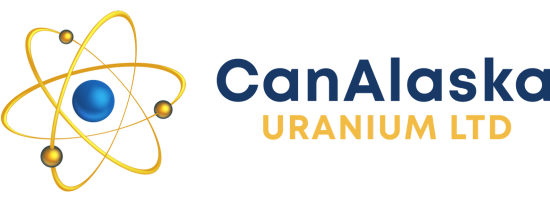Vancouver, Canada, February 29, 2008 — CanAlaska Uranium Ltd, (CVV — TSX.V) the “Company” and Westcan Uranium Corp (WCU — TSX.V), are pleased to release the preliminary results for the first drillhole completed on the Key Lake drill program in 2008, (see NR January 22, 2008). Diamond drill hole Key 005 intercepted a sequence of well foliated to sheared granite gneisses, pelites, graphitic pelites and brecciated granitoid rocks, with hematite alteration in the granites and metasediments. The uranium mineralization intercepted in the hole has been verified by hand scintillometer and down hole probe measurements. Radioactivity is associated with pelites, granitoid, and the contact zone between pelites and hematised brecciated granitoid. Assay samples have been sent for laboratory analysis, but may not be available for some time.
Mr. Chris England, President of Westcan Uranium Corp., stated that “We are extremely pleased with this brand new discovery of uranium in such a highly prospective area. We intend, in concert with Canalaska, to pursue this target aggressively”.

The Key Lake Project is located in the southeast of the Athabasca Basin, Canada. The project is under option to Westcan Uranium Corp., which is funding $2,000,000 in uranium exploration to earn a 50% ownership interest.
In January 2007 the Company drilled three holes in the Key Lake area, and intercepted strong alteration in core, but only low uranium assay values. In 2008, drilling commenced on January 23rd. The drill site is close to the road and the facilities at the Key Lake mill.
The 2008 drill target was a VTEM conductive anomaly which had been interpreted to lie at a depth of 250 metres within a metasedimentary inlier in an Archean Dome immediately south of the Key Lake Mine, which produced approximately 200,000,000 pounds of U3O8 between 1981 and 1999. The first attempt to drill the target was abandoned when the drill rods became stuck. This drillhole intersected radioactivity from 120 to123 metres depth down hole, and again at the point that the hole was lost. Ludlum 1210 model hand scintillometer readings of 300-350 cps were recorded at 123 metrres and at 176 metres depth. The second drill hole from the same site, was drilled at a shallower angle, over the first aborted hole, and successfully drilled into the target zone. Ludlum 1210 model hand scintillometer readings of 1500cps and 800 cps were recorded at 339 and 344 metres. Standard procedure is to use a downhole gamma probe to obtain a radiometric drill log. The zones of radioactivity noted in the first hole were noted in the second drillhole, using a Geovista Natural Gamma Scintillometer probe, (see attached drill section and gamma log).
Drill hole Key 005 intercepted a graphitic conductor with four mineralized sections down hole, and at the target depth, with associated uranium mineralization. Drill hole radiometric surveying has confirmed the observations of uranium mineralization in the core. The upper zones of radioactivity in the successful drillhole match zones intercepted in the first aborted hole (Key 004)

Samples of the drill core have been collected and submitted to Acme Analytical Laboratories Ltd in Vancouver. Acme has implemented a quality system compliant with the International Standards Organization (ISO) 9001:2000 Model for Quality Assurance and ISO 17025 – General Requirements for the Competence of Testing and Calibration Laboratories. The samples were collected by CanAlaska field geologists under the supervision of Dr Karl Schimann, and were shipped in secure containment to the laboratory.
Drill information and radiometric grade estimate.
Key Lake holes 004 and 005 January 2008

Chemical results will be released when received, however preliminary uranium content can be inferred from the radiometric assay logs. These values are presented in the attached results table. This table shows calculated equivalent uranium grade for the four mineralized intersections in Key 005. These uranium values are only indicative, as the assumption is that all the radioactivity is due to uranium and that there is no dis-equilibrium. Furthermore, some of the correction factors (water and steel) remain approximate for the probe used. The K factor used to interpret the uranium content was derived from calibration runs of the probe in the SRC test pits located in Saskatoon, SK., in January 2008, prior to the commencement of the drill program.
The conductive target is within a magnetic low in the centre of a reported Archean dome structure. This conductor strikes NE-SW, a similar direction to the Key Lake mine structure. Historical records show that five short vertical holes were drilled in this vicinity in the past. These historical holes were much too short to reach this target which was defined from the modern VTEM survey carried out by the Company in 2006. The geophysical modeling of the data from the 2006 VTEM survey puts the top of this conductor at about 250 m depth with a shallow SE dip, suggesting a potential thrust structure.
CanAlaska and Westcan are evaluating further drilling on this target for later this winter season. In the meanwhile the drill has been transferred to CanAlaska’s nearby Cree property, where it is currently operating. A second drill is also operating at CanAlaska’s Lake Athabasca property in the NW Athabaaca basin, in an area near the historic Gunnar uranium mine.
Peter Dasler, M.Sc. P Geo. is the qualified technical person responsible for this news release.
About CanAlaska Uranium
CANALASKA URANIUM LTD. (CVV — TSX.V, CVVUF — OTCBB, DH7 — Frankfurt) is undertaking uranium exploration in seventeen 100%-owned and two optioned uranium projects in Canada’s Athabasca Basin. Since September 2004, the Company has aggressively acquired one of the largest land positions in the region, comprising over 2,500,000 acres (10,117 sq. km or 3,906 sq. miles). CanAlaska has expended over Cdn$24 million exploring its properties in the Athabasca Basin and has delineated multiple uranium targets. Initial drilling results from the West McArthur Project revealed uranium mineralization and significant zones of hydrothermal alteration, indicative of a favourable environment for uranium deposition. Active drilling and exploration has continued through the Summer, and Fall 2007 seasons at West McArthur and at 2 other significant projects. The Company’s high profile in the prominent Athabasca Basin has attracted the attention of major international strategic partners. Among others, Mitsubishi Development Pty., a subsidiary of Japanese conglomerate Mitsubishi Corporation, has undertaken to provide CanAlaska C$11 mil. in exploration funding to earn 50% of the West McArthur Project. In addition, exploration of CanAlaska’s Cree East Project has commenced under a C$19 mil. agreement executed with a consortium led by Hanwha Corporation, and comprising Korea Electric Power Corp., Korea Resources Corp. and SK Energy Co, Ltd.
On behalf of the Board of Directors
“Peter Dasler”
Peter Dasler, P. Geo., President & CEO
Investor Contact: Emil Fung, Vice President, Corporate Development
Tel: +1.604.688.3211 Toll Free (North America) 1-800-667-1870 Email: info@canalaska.com
The TSX Venture has not reviewed and does not accept responsibility for the adequacy or accuracy of this release: CUSIP#13708P 10 2.
This news release contains certain “Forward-Looking Statements” within the meaning of Section 21E of the United States Securities Exchange Act of 1934, as amended. All statements, other than statements of historical fact, included herein are forward-looking statements that involve various risks and uncertainties. There can be no assurance that such statements will prove to be accurate, and actual results and future events could differ materially from those anticipated in such statements. Important factors that could cause actual results to differ materially from the Company’s expectations are disclosed in the Company’s documents filed from time to time with the British Columbia Securities Commission and the United States Securities & Exchange Commission. Not to be construed as an offer to buy or sell securities of CanAlaska Uranium Ltd.

